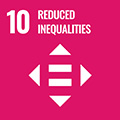- Docente: Maria Giovanna Belcastro
- Credits: 12
- SSD: BIO/08
- Language: Italian
- Moduli: Maria Giovanna Belcastro (Modulo 1) Federico Fanti (Modulo 2) Marta Galloni (Modulo 3) Fausto Tinti (Modulo 4) Valeria Franceschini (Modulo 5)
- Teaching Mode: Traditional lectures (Modulo 1) Traditional lectures (Modulo 2) Traditional lectures (Modulo 3) Traditional lectures (Modulo 4) Traditional lectures (Modulo 5)
- Campus: Bologna
-
Corso:
Second cycle degree programme (LM) in
Biodiversity and Evolution (cod. 5824)
Also valid for Second cycle degree programme (LM) in Teaching and Communication of Natural Sciences (cod. 5704)
Second cycle degree programme (LM) in Biodiversity and Evolution (cod. 5824)
-
from Oct 01, 2024 to Dec 03, 2024
-
from Oct 03, 2024 to Nov 07, 2024
-
from Dec 05, 2024 to Dec 18, 2024
-
from Nov 05, 2024 to Nov 26, 2024
Learning outcomes
The course is aimed at providing knowledge on the origin and historical evolution of museum collections starting from the birth of the great naturalistic museums up to their diffusion in the various countries, thanks to the work of the scientific societies and the role of the scientific expeditions. The students will know the organization of the museum collections of the University of Bologna, their variety (biological-naturalistic, paleontological) that contain the history of the various scientific institutes and disciplines, and their role and functions in the development of science. The students will know the conception and organization of the modern museum institutions, their current role and function (research, teaching, third mission), and the the current legislation in the field of cultural heritage. The students will also know the problems related to the management of the museum scientific collections. In this frame criticalities, perspectives and potentialities will be highlighted to foster a critical and conscious vision of the student on this peculiarity typology of museums underlining the still current value and function of the scientific museums in the context of research, conservation, communication and education. The course offers basic scientific knowledge to understand the concepts of the evolution and biodiversity, and the history of ecosystems changes, dealing also with the relationship between science and museums by deepening the contemporary debate relating to their function and their educational role in today's society. With this approach we intend to develop the theme of evolution and biodiversity and their representation in scientific museums through museum collections. Theoretical and research aspects will be addressed. Exploring the different museums, the students will define an objective and develop a proposal of their own for a project idea or innovate aspects they can identify for museum enhancement and communication. Emphasis will be placed on the valence of scientific vs. historical and artistic asset. Aspects related to the ethics of science, the custody, conservation and display of the sensitive collections, on the basis of current legislation, will be also provided. The course aims to highlight different methods, planning and educational paths of the different collections: the herbarium and of botanical garden of the Bolognese university, the zoological, comparative anatomy, paleontological and anthropological collections. At the end of the course the student is able to (a) understand the historical and historical-scientific value of the collections of scientific museums, (b) to propose and plan actions specific and targeted museum educational paths making the meaning of ""making"" a scientific museum their own, (c) and, by adapting and integrating previous and acquired knowledge, to promote scientific communication to participate in the process of continuous transformation that museums must have to respond to rapid changes in contemporary society. The student also (d) understands and knows nature and nature material characteristics of the finds of scientific museums, (e) is able to collect and catalog the finds by macro-categories and (f) it can propose actions aimed at improving its conservation status.
Course contents
- The onset of Anthropology and the scientific collections and museums
- Anthropological and ethnographic collections in the Italian museums: what value today?
- Current paradigms of anthropology: human evolution
- Naturalistic and cultural heritage and dissonant heritage
- Ethics in the research, storage, preservation, and display of sensitive artifacts and collections
- The digitization applied to the human remains
- The case of the “Lidio Cipriani” plaster facial casts and the process of decolonization of museums
Readings/Bibliography
MG Belcastro, G Manzi, J Moggi (a cura di) - QUEL CHE RESTA, Scheletri e altri resti umani come beni culturali. Ed. Il Mulino, Bologna, 2022
G Grechi - Decolonizzare il museo. Mostrazioni, pratiche artistiche, sguardi incarnati, Mimesis, Eterotopie, 2021
L Smith - Uses of Heritage. Routledge Tailor & Francis Group, London and New York, 2006
Govoni P, Belcastro MG, Bonoli A, Guerzoni G. (in uscita settembre 2024) - Ripensare l'Antropocene. Oltre natura e cutlura. Carocci editore.
scientific papers
Teaching methods
Theoretical and practical activities in the laboratory and museum.
Remotely lessons with curators of anthropological museum collections
Assessment methods
Production of a written paper/or power point presentation/or video on a topic related to a theoretical/practical experience agreed upon with the teachers.
Teaching tools
Video projector and PC. Museum collections will be used for hands-on activities.
Office hours
See the website of Maria Giovanna Belcastro
See the website of Federico Fanti
See the website of Marta Galloni
See the website of Fausto Tinti
See the website of Valeria Franceschini
SDGs



This teaching activity contributes to the achievement of the Sustainable Development Goals of the UN 2030 Agenda.
